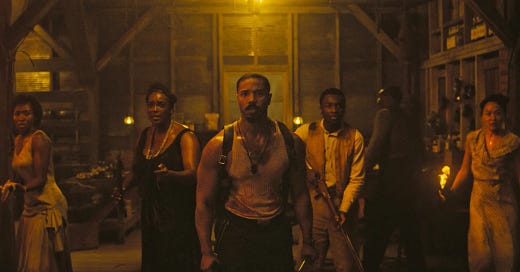The inaugural edition of Field Notes is on me. Next week, it’s behind the paywall. Enjoy!
April 1, 2023, Late Afternoon, Living Room
I saw the text at 4:30 p.m. It’s a warm spring Saturday. I’ve been lying in the same spot, curled into the fetal position on the couch, mourning what I believed to be an amicable, loving split between two people who spent the bulk of their 20s together. But here I am with my phone in my hand, staring at a text from someone I do not know, blowing up my phone from a number I don’t recognize.
“Call me, please. It’s about your boyfriend.”
“Who is this?” I text back.
My phone rings. I answer, and the world I’ve spent seven years building in my head—one that told of two people who loved each other so much that they couldn’t keep one another from their parting destinies—comes crashing down around me. I don’t remember the conversation she and I had, but I do recall screaming to his voicemail a medley of “fuck you’s” and “never contact me again’s”. It’s ugly, and it only gets worse, culminating in our last moment together being one of the most heinous yet heartbreaking betrayals I’ll ever experience.
This breakup will become one of the most traumatic experiences of my life. I will spend the next few months feeling raw and lying to anyone who asks me how I’m doing—“I’m fine” is a powerful dodge—as I try to figure out a way to heal from it. In hindsight, I’ll realize that I want more than healing; I want salvation. I want to be restored to who I was before the harm was caused. I want to feel whole again. Eventually, I learn that healing isn’t linear, and it certainly does not have a set endpoint. As ol’ boy says in the first season of True Detective, it is a flat circle, and those of us looking for a return to fullness, instead of figuring out where we go from where we are now, are just dancing around trying to reconnect with who we once were.
Warning: spoilers ahead!
April 22, 2025, Early Evening, Back of a hot Lyft leaving Georgetown AMC
I’m caught up on how Ryan Coogler, the film’s director, drives the storyline, in part, with the idea that healing isn’t afforded through salvation, but through surrendering to its never-ending cycle and reckoning with grief.
Things I’m Noticing:
1. Sinners almost immediately drags us into loops of healing. Grief is a relentless bastard, and most films try to tame it. They give it a clean arc and resolution. Sinners doesn’t give us the satisfaction. Instead, the Southern Gothic horror soaked in blood, blues, and memory asks a question that many of us are unwilling to reckon with: What are you willing to release to heal?
2. Smoke and Stack (Michael B. Jordan) return to Clarksdale, Mississippi, for several reasons, one of which is to make amends and reckon with the broken relationships they left behind seven years prior.
3. Sammie (Miles Caton) is at a crossroads with his father. Pastor Jedediah (Saul Williams) condemns blues music as evil and discourages his son from playing, especially at his cousins' juke joint. Of course, Sammie goes anyway, and when he burst into church the next morning, bloodied and maimed, with his father begging him to drop what remains of his guitar, he chooses to leave his beloved family behind to pursue his music.
4. Annie (Wunmi Mosaku) and Smoke’s tense, but tender—and incredibly horny!!!!—reunion makes it clear that the loss of their child fractured their marriage. Later, when the vampires finally make it into the juke joint, Annie chooses death over allowing her soul to be trapped on earth for eternity.
5. Following shootout with the Klan, Smoke, on the edge of death, surrenders thoroughly once he sees Annie and their child waiting for him in the afterlife. Annie tells him that she’ll let him hold their daughter if he puts the cigarette out because she doesn’t want any smoke to get on her—a nicely placed double entendre identifying that Elijah must discard his emotional armor if he wants to move on.
6. Remmick, whose desire for community is fueled by the grief of losing his ancestral ties, felt like a conduit of emotional truth and loneliness despite his anger and manipulativeness. Grief and Sammie’s griot-like power to connect with ancestors across space and time brought Remmick to the juke because he thought Sammie’s music could heal his centuries-old wounds.
7. Whewwwww. The music and the dancing! Sammie’s music-making became a conduit for grief, pierced the veil, allowed contact with the ancestors, and offered a release from the pain of everyday life. The dancing inspired by his songs was a kind of somatic therapy, a way of getting the pain out of the body, of naming the unnameable and making it a bit easier to carry.
April 22, 2023, Late Afternoon, Kitchen of new apartment
Lord knows we all carrying something.
I spend hours dancing around my apartment blasting SZA, Megan Thee Stallion, Beyoncé, Teddy Pendergrass, Marvin Gaye, Al Green, Donna Summer, and many others in the weeks following my split from my ex. These sessions are often interlaced with raucous bouts of crying where I find myself curled into a ball somewhere, letting the pain escape my body as heaves, roars, tears, and, once I get up, another jig or two.
I move through the grief and toward healing with apathy, nonchalance, rage, bargaining, sadness, and aching tenderness, cycling through each like a song stuck on repeat as I try to find somewhere for my feet to land.






